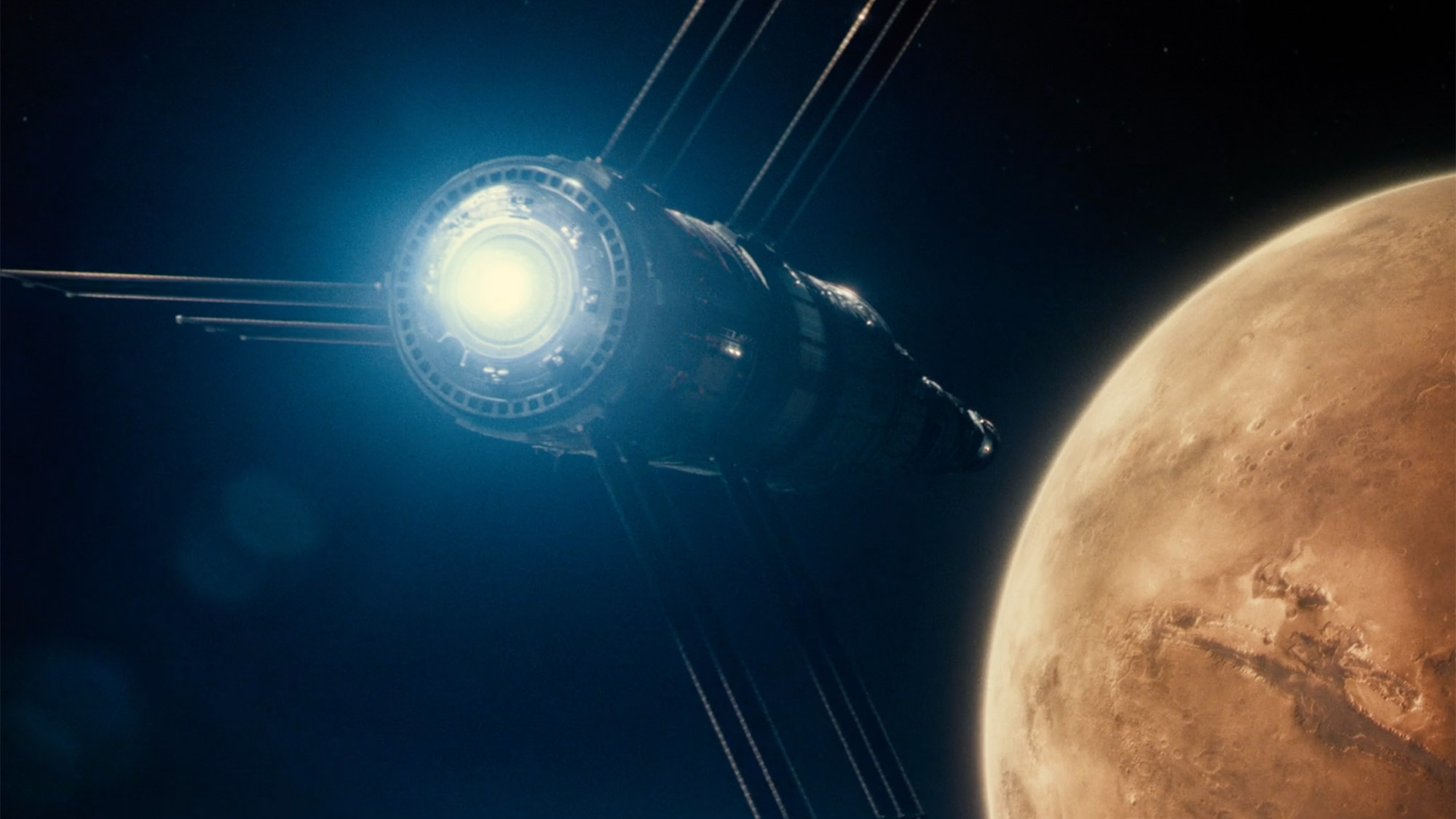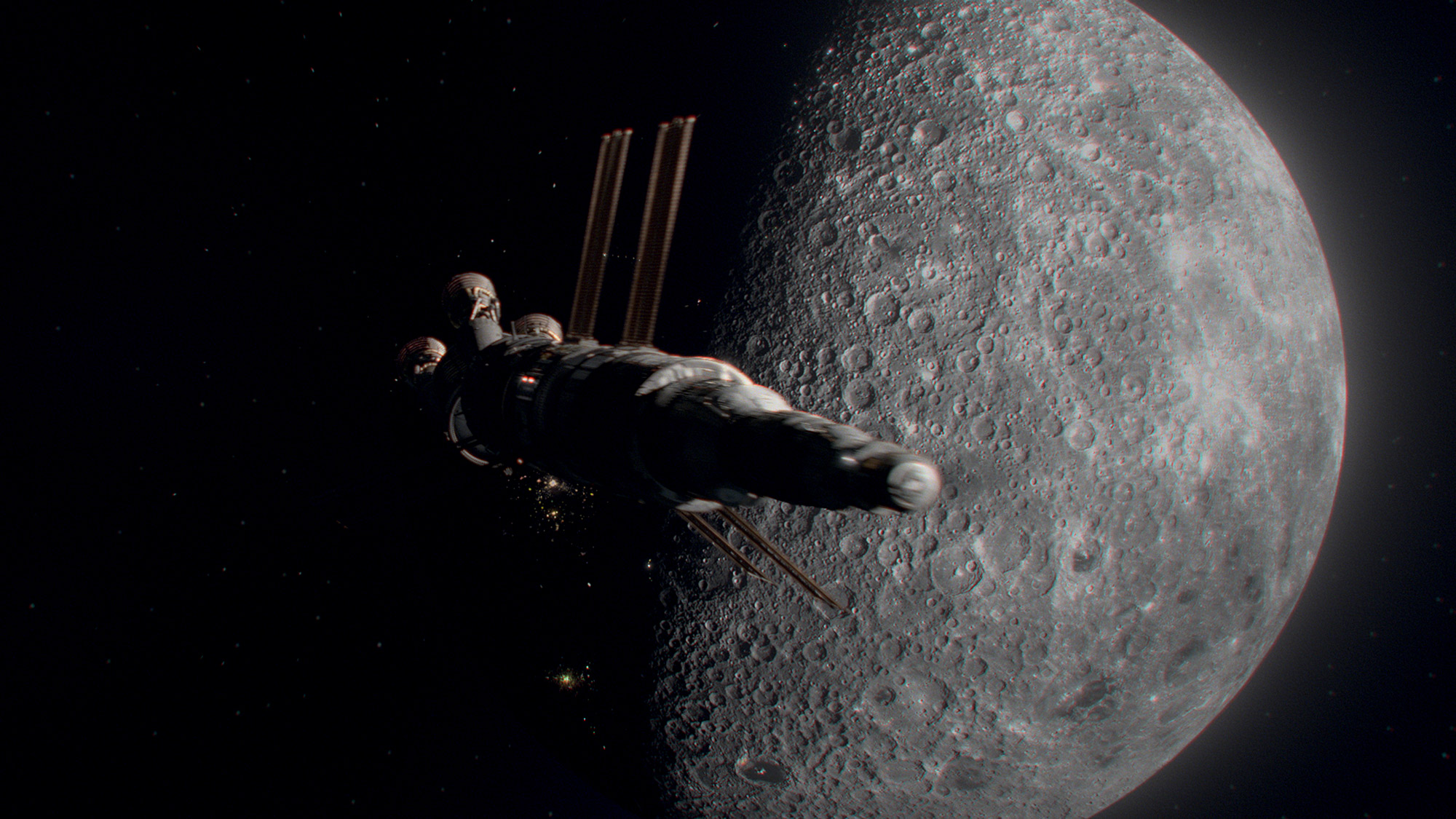In 'Ad Astra,' Brad Pitt Is Stellar, But the Solar System is the Real Star of the Show

In the new science-fiction blockbuster "Ad Astra," Brad Pitt plays Roy McBride, an astronaut with the U.S. Space Command who embarks on a dangerous, cosmic journey to save the solar system from his own father, a scientist on a lifelong quest to discover intelligent extraterrestrial life.
But, while Pitt delivers a captivating, delicate and dramatic performance, the real star of "Ad Astra" is the solar system. The film is saturated in realistic elements, and none are more striking than the details of space itself. Not to give too much away, but there are *some* planets shown in the film. And they will leave you awestruck. This isn't the first time that realistic planets have been featured in a sci-fi film, but the way they pop off the screen in "Ad Astra" is certainly unique.
One reason why the cosmic visuals in "Ad Astra" are so stunningly realistic is that, particularly for the moon and Mars, the movie incorporates real NASA imagery and footage of space.
Watch: See a Sneak Peek of 'Ad Astra' Moon Action!
Video: Brad Pitt Talks 'Ad Astra' in Space (Video)
"We reviewed a script of Ad Astra early in production," Bert Ulrich, NASA's liaison for film and TV collaborations, said in a statement. "Although there was no NASA storyline, we provided some of the exciting images and footage for the film especially of the Moon and Mars. Sci-fi films like Ad Astra, the Martian, Interstellar, and Gravity take movie audiences out of this world incorporating some of NASA’s most inspirational photography and footage."
Spoilers ahead, beware!
The first glimpse you get of a planet in "Ad Astra" is Earth. McBride is seen working on the "International Space Antenna," a massive structure that stretches from Earth's surface into the upper atmosphere. Climbing out onto a ladder-like limb of the structure to do some maintenance work, McBride looks down and sees the Earth below. The view is so realistic that it borders on dizzying.
McBride's journey off Earth begins with a trip to the moon. And, while some of the fantastical elements of his time on the moon (e.g., moon pirates) are more fiction than science, the view of our rocky satellite, the surface of the moon and how people and vehicles move on it in lunar gravity feels very real. A quick(ish) trip to Mars from the moon reveals yet another, stunning destination.
Breaking space news, the latest updates on rocket launches, skywatching events and more!
But it's perhaps McBride's final planetary pitstop that delivers the most sumptuous visuals. When McBride arrives on the outskirts of Neptune's rings in an attempt to make contact with his father, who he thought previously was dead, you get a view of the planet in all its brilliant, blue glory.
The film doesn't just show the beauty of the planet, however. After making a tense escape from his father's now-abandoned ship, McBride has to shield himself from the debris that orbits the planet in its rings.
The thrills and drama of a science-fiction film like "Ad Astra" might not be for everyone. But whatever your movie preferences might be, the jaw-dropping cosmic visuals are truly a sight to behold.
- 1st 'Ad Astra' Trailer Hints at Interplanetary Action with Brad Pitt
- 2nd 'Ad Astra' Trailer Teases More Spectacular Sci-Fi Starring Brad Pitt
- Epic 'Ad Astra' Trailer Features Moon Buggy Chase and Outer Solar System
Follow Chelsea Gohd on Twitter @chelsea_gohd. Follow us on Twitter @Spacedotcom and on Facebook.

Chelsea “Foxanne” Gohd joined Space.com in 2018 and is now a Senior Writer, writing about everything from climate change to planetary science and human spaceflight in both articles and on-camera in videos. With a degree in Public Health and biological sciences, Chelsea has written and worked for institutions including the American Museum of Natural History, Scientific American, Discover Magazine Blog, Astronomy Magazine and Live Science. When not writing, editing or filming something space-y, Chelsea "Foxanne" Gohd is writing music and performing as Foxanne, even launching a song to space in 2021 with Inspiration4. You can follow her on Twitter @chelsea_gohd and @foxannemusic.

